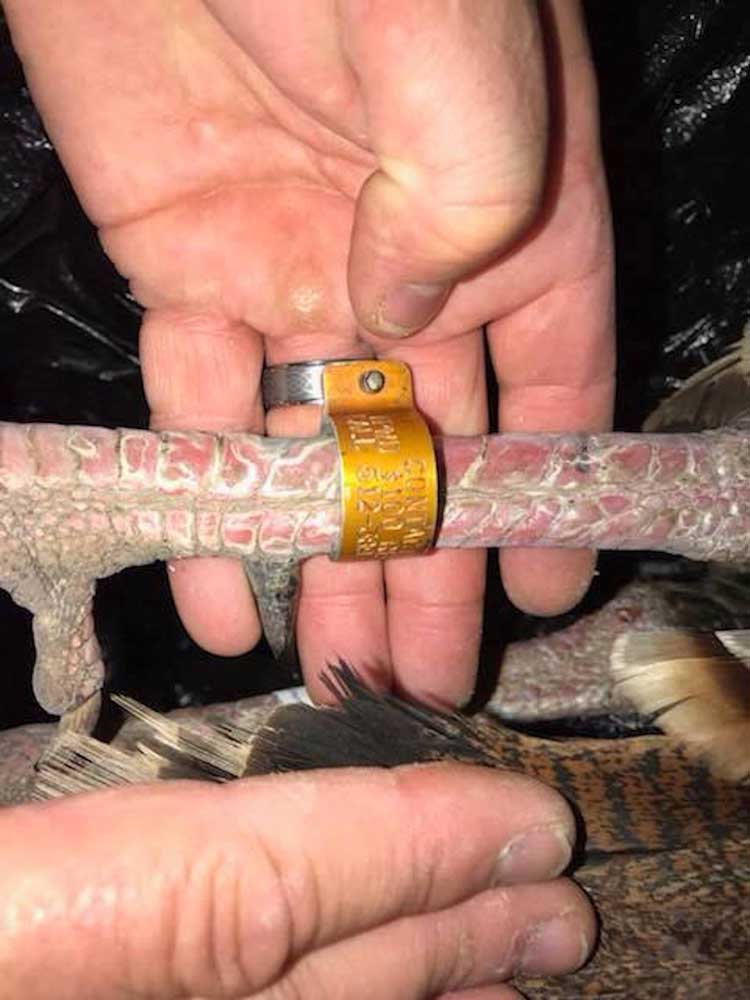Texas turkey released in January takes 75-mile walk
Published 4:05 pm Friday, May 4, 2018

- A banded Rio Grande gobbler released in Henderson County in January was taken by a bow hunter during the spring turkey season in Ellis County. The bird was part of a restocking project by the Texas Parks and Wildlife Department.
As hunters, and to a certain degree fishermen, we generally have a small view of the wonderful world of wildlife.
Although game cameras have changed it some, as deer hunters what we know about a deer’s world is what we see between the fences that restrict a hunter’s movement and what we can see from our stand.
Trending
Even with migratory birds, we wonder little more than what we can see from a duck blind or while hidden under a shady oak dove hunt.
But for some animals, home is wherever they stop at the end of the day. Mountain lions and young male bears have been known to wander hundreds of miles across states during their lives. Deer generally have a home range of a square mile or so, but at times even they stray. It is not uncommon for ducks to start in Canada and end up in Central America. Even dove may travel 10 miles a day just for water.
Then there is a Rio Grande turkey released in January along Catfish Creek in southern Henderson County. The bird was initially trapped in Coleman County in North Central Texas and transported to East Texas by the Texas Parks and Wildlife Department as part of its wild turkey restocking effort.
What makes this bird interesting is that while most others have stayed in close proximity to the release site, this bird was taken by a bow hunter 75 miles away in Ellis County. To get there, it had to cross the Trinity River, maneuver between Cedar Creek and Richland Chambers reservoirs, avoid housing developments and then the biggest hurdles, getting across both Interstates 45 and 35.
“I am extremely surprised,” said Jason Hardin, TPWD’s turkey program leader. “It wouldn’t surprise me if it went 25 miles if it was a young bird, but I wouldn’t expect a mature bird to go 75 miles across two interstates.”
Hardin said when the department has released wild turkeys, GPS data from tracking collars has shown birds might roam up to 10 miles before returning to the release site. One bird was such a homebody, it was killed within 200 yards of its release site.
Trending
“He wasn’t coming back,” Hardin said of the walk-about Rio. “None of (TPWD wildlife biologists) ever heard of one going that far. We are thinking it was an interesting rare event.”
As part of a super stocking effort to bring turkeys back to East Texas, the department released birds in the Catfish Creek drainage in 2014, 2016 and this past winter. Including the Gus Engeling Wildlife Management Area and several large ranches, the area provides a large amount of good contiguous habitat.
Unlike other East Texas release sites where just eastern strain turkeys are being released, the Henderson County site has been stocked with both eastern turkeys and Rios because it is considered transitional habitat.
“I put those bids out there and we will see if one genetics do better,” Hardin said.
Along with eastern turkey stockings in Henderson County, there have also been stockings of other Rios just to the west in Navarro County as part of the Western Navarro County Bobwhite Recovery Project. Those birds appear to be doing well in the farming and ranching country and are expanding. Some of those birds are believed to have moved north into Ellis County, as have others from counties to the west.
A transition zone once existed in Texas when eastern turkeys were plentiful in East Texas and Rio Grande turkeys existed in larger numbers in the eastern part of their range. The transition zones are created both by habitat and rainfall amounts. Eastern turkeys naturally do better in wetter climates. Transition zones are seen in other states like Oklahoma, Kansas and Nebraska where both species are plentiful.
Hardin said south of Dallas to at least Walker County, it appears the Trinity River is the unofficial boundary from one zone to the other.
In transition zones where both birds exist, it is not uncommon for them to interbreed. This has happened in Montague County in North Texas where department-stocked Rio Grande turkeys have been known to breed with easterns that were released in counties to the east.
If the Rios are successful in becoming established in Henderson County — and there are already signs they are spreading into Leon and Freestone counties — that could speed stocking efforts in some counties because the species is abundant in other parts of the state and much cheaper and easier for the department to obtain.
“If they don’t take, it is not going to be because of the lack of brood stock,” Hardin said.



